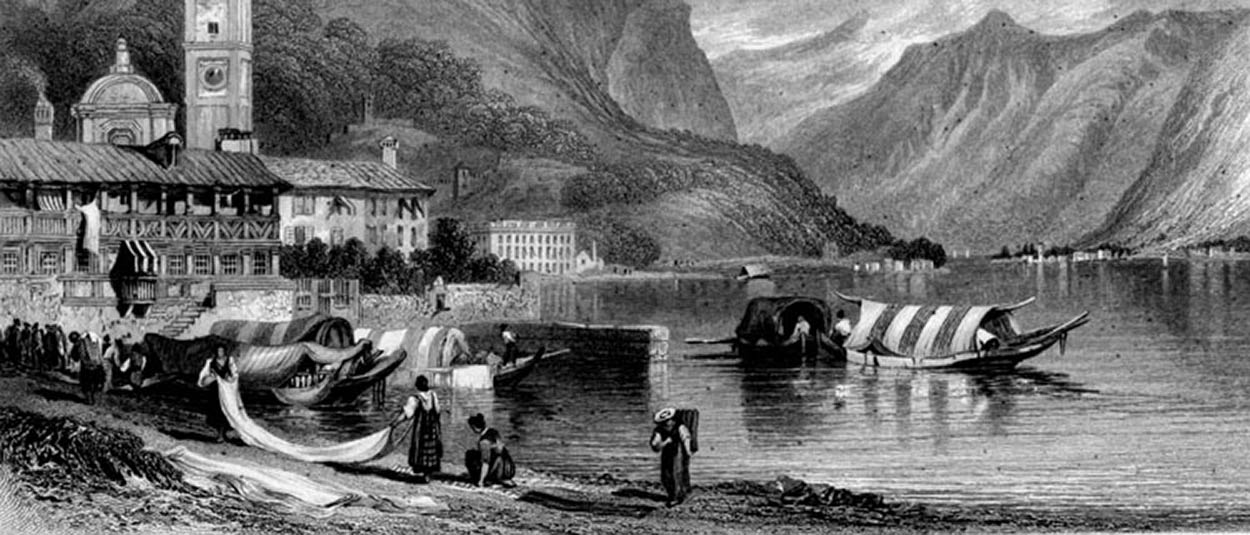
The lakes’ proximity to the great trade routes between the Mediterranean and Central Europe ensured prosperity and enticed foreign invasion. Each new arrival made its mark, contributing a rich history and culture to this fine region.
8,000BC Emergence of the Valle Camonica civilisation, with the first rocks carved by Camuni tribes.
202–191BC Romans start to establish colonies in Milan, Como, Brescia, Verona and other settlements.
222BC Romans conquer Milan.
AD313 Emperor Constantine grants freedom of worship to Christians in the Edict of Milan.
4th century Milan becomes the de facto capital of the western Roman Empire.
568 The Lombards establish their capital at Pavia.
774 Charlemagne takes the Lombard crown.
1024 Emergence of the comuni, or independent city-states.
1118–27 Como defeated by Milan in the Ten Years War.
1152 German prince Frederick Barbarossa is named as the Holy Roman Emperor.
1260–1387 Lake Garda and Verona ruled by Scaligeri (della Scala) dynasty.
1277–1447 Duchy of Milan ruled by the Visconti dynasty.
1347–8 Black Death devastates the population of northern Italy.
1405 Venetians conquer Verona, Padua and Bergamo.
1450–99 Duchy of Milan ruled by the Sforza dynasty.
1530 Charles V is crowned as the Holy Roman Emperor, and Lombardy comes under his rule.
1714 Spain cedes Lombardy to the Austrian (Habsburg) empire.
1796 Napoleon invades northern Italy.
1814–70 The Risorgimento – a movement for the liberation and political unification of Italy.
1848 Milanese rebel against the Austrians, who re-enter the city.
1859 France defeats Austria at the battles of Magenta and Solferino.
1871 Italian unification.
1915 Italy joins the World War I Allies.
1922 Mussolini becomes prime minister, and within three years has established a dictatorship and declared himself Il Duce.

Battle of Solferino in 1859
Wikimedia Commons/public domain

Giorgia Meloni
Wikimedia Commons/public domain
1940 Italy enters World War II as an ally of Nazi Germany.
1943–5 Italy surrenders to the Allies; Mussolini is installed in the Republic of Salò.
1945 Mussolini and his mistress, Claretta Petacci, are captured by partisans and executed.
1958 Italy joins the EEC, forerunner of the European Union (EU).
1978 Aldo Moro, ex-prime minister and leader of the Christian Democrats, kidnapped and murdered by the left-wing Red Brigade.
1992 Tangentopoli (‘Bribesville’) corruption scandals rock the north and lead to an overhaul of public life.
2001 Silvio Berlusconi is elected prime minister.
2002 The euro replaces the lira as the official Italian currency.
2008 Berlusconi starts his fourth term as Prime Minister.
2011 Mario Monti brought in as PM to rescue Italy from the debt crisis.
2013 Pope Benedict XVI resigns and is succeeded by Pope Francis I.
2013 The anti-establishment Five Star Movement, co-founded by ex-comedian Beppe Grillo, stuns the mainstream parties by taking a quarter of the votes in the general election.
2016 A series of severe earthquakes occur in Central Italy, causing extensive damage, injuries and deaths.
2017 Italy fails to qualify for the 2018 FIFA World Cup, the first time since 1958.
2022 Right-winger Giorgia Meloni
is elected Prime Minister on an
anti-immigration ticket. Migrant figures – and deaths at sea –
continue to rise.
2023 Devastating floods in Emilia Romagna; wildfires and record-breaking temperatures in southern Italy; freak storms in Lombardy.

Lake Como in 1830
Wikimedia Commons/public domain